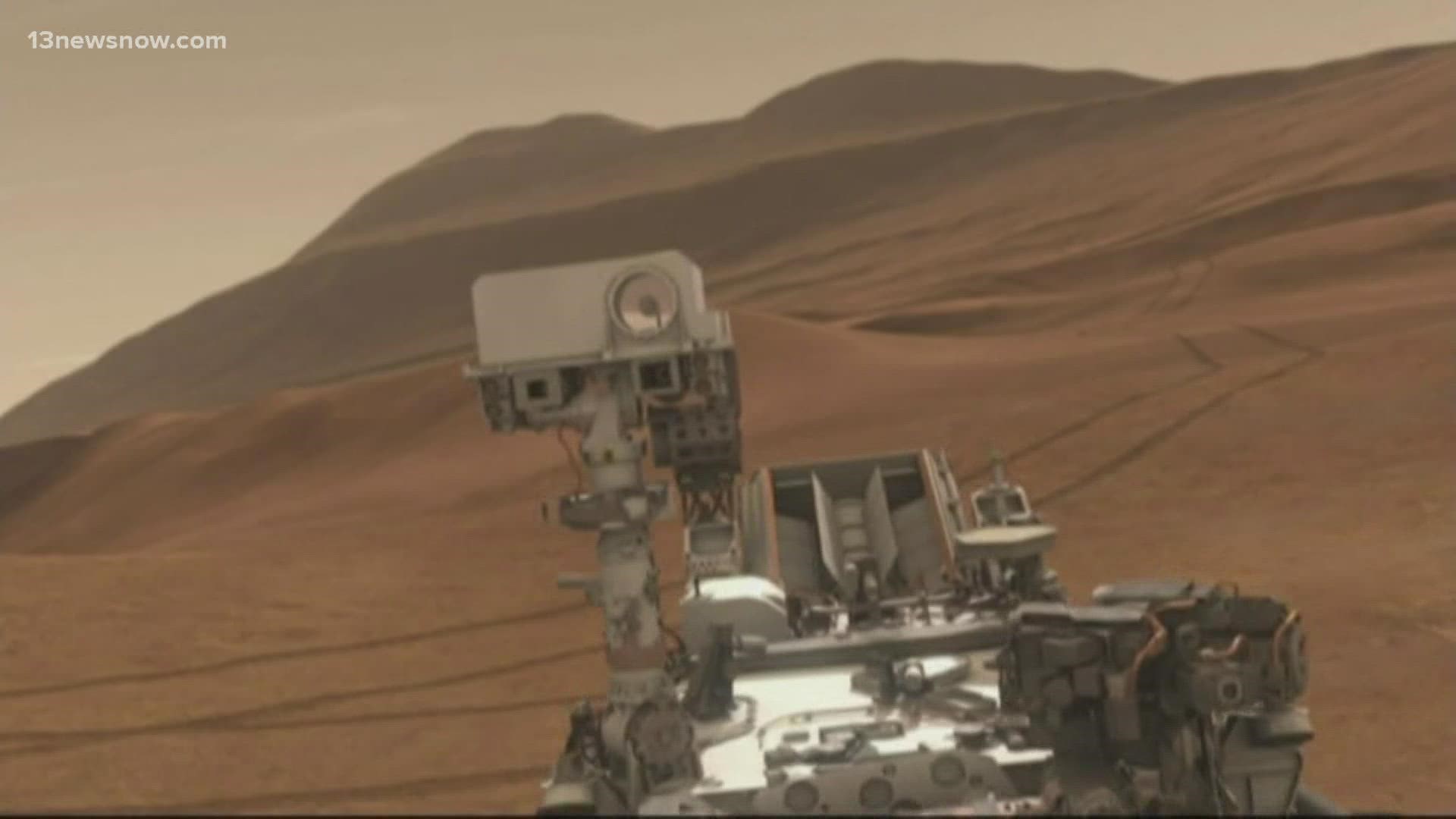NORFOLK, Va. — It was the celebration of a mission that’s still paying off today.
Video from 2012 shows a team of NASA researchers cheering in the control center after the Curiosity rover landed on Mars. It was no easy task. At the time of the landing, out of the 40 Mars missions launched from Earth, 26 had failed.
Even before going to work on the Red Planet, Curiosity needed to make the 354-million-mile commute, landing in a way that had never been done before referred to as "Seven Minutes of Terror."
“The novel design is this little rocket jetpack that flies the rover down and then lowers the rover down on a tether,” said Ashwin Vasaveda from the NASA Jet Propulsion Laboratory in 2012. “It lands on the ground, and then the rocket jetpack flies off and we’re done with it.”
The mobile chemistry lab --about the size of a Mini Cooper -- has been exploring, scanning, sampling, and capturing images of Mars ever since.
It’s found methane in the atmosphere, organic chemicals in the soil, and even signs of freshwater and beauty. Just last week, Curiosity helped researchers produce an image of a flower-like rock artifact smaller than a penny.
While Curiosity is thriving, a separate Mars mission could be dead in the water.
Europe and Russia were scheduled to launch a rover to Mars this fall.
But after a meeting with its 22 member states, the European Space Agency now says, because of the war in Ukraine “the sanctions and the wider context make a launch in 2022 very unlikely.”

